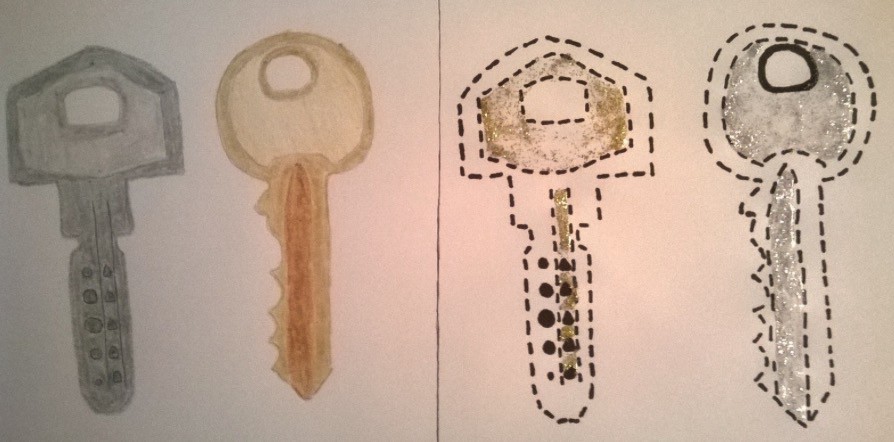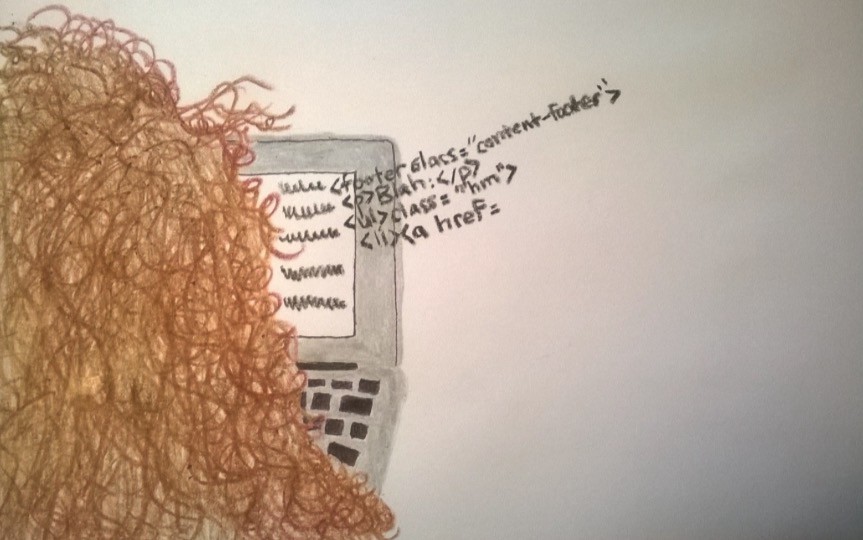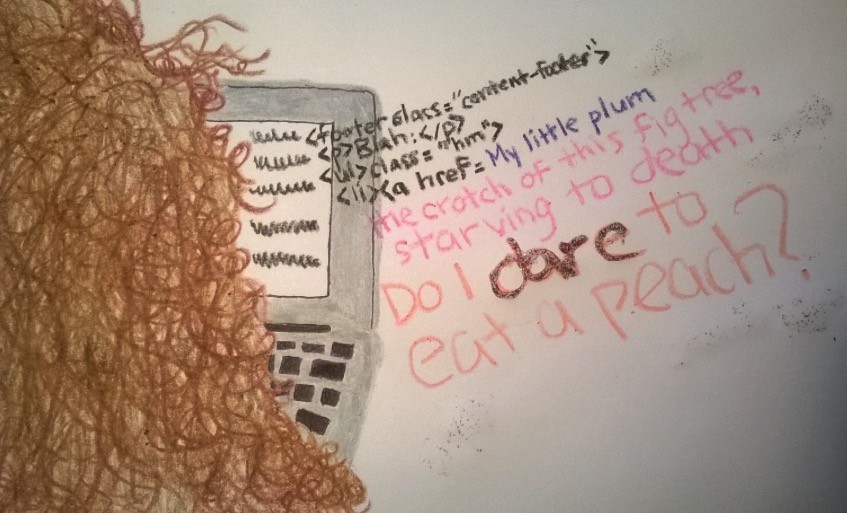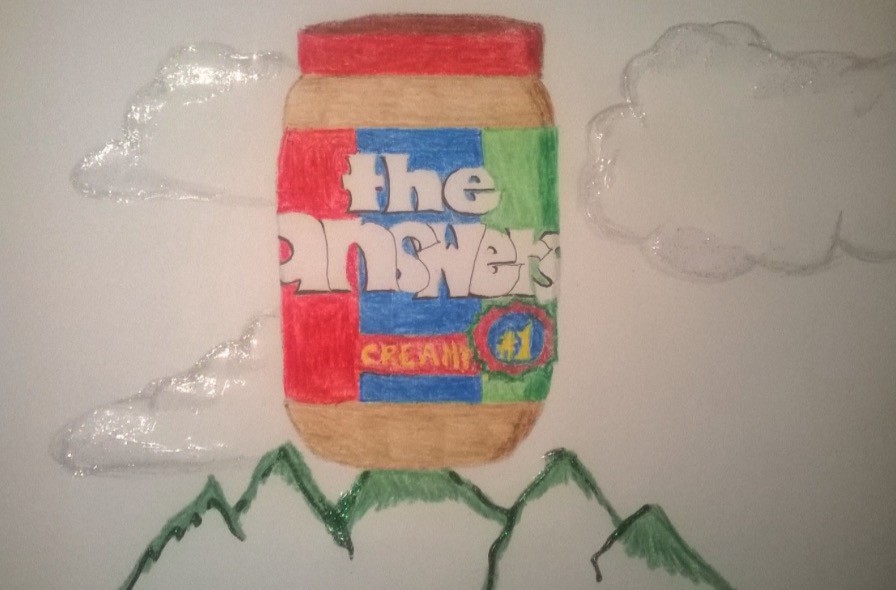Losing Your Job In 32 Steps
by Anna Cherry

1. When, around your birthday, you hear rumors of budget cuts and layoffs, do not be alarmed. Startups are always on the verge of shutting down — and anyway, you were told you’re up for a promotion next quarter. Besides, you’ve been unemployed before. You’d be fine!
2. Remember the beginning with this company? They all but promised that after your three-month trial period, you would win a coveted internal employee-with-benefits position. You were confused when, instead, you were given a five-dollar raise and seated near an expanded legion of interns and permalancers. But you were fine!
3. Recall another surprise, from a month after you started. You were already working overtime hours that you couldn’t bill and you learned that your boss also expected you to use your free time to take the online courses you would be writing reviews of. You wanted to know why research couldn’t be done on the clock. “I’ve always paid writers to write,” he explained. Totally fine!



4. Get a quick Friday-after-work drink with Such a Nice Guy. You’ve recently realized you should probably stop going on dates with him because you are indifferent about him, just like every other man you go on dates with, but you can’t afford therapy to figure out why. You told yourself that the third time you saw him should be the last time, but you’re supposed to have a drink when you’re about to be laid off even when you’re a hundred percent fine.
5. Break a six-month streak of celibacy by sleeping with Such a Nice Guy who you wish you felt anything for. Wake up around 4 A.M. and taxi home. Read an incredibly thoughtful text expressing his desire to do this again soon.
6. Text Such a Nice guy and tell him that you won’t be able to see each other anymore.
7. Relax when, the following Friday, the CEO comes into the office to make an upbeat announcement about the company’s change of direction.
8. Entertain the idea that the grim tone of office chatter in recent weeks has been part of an elaborate April Fool’s Day hoax.
9. Run into Such a Nice Guy on the subway, which has never happened before. Maybe even a year ago you would have assigned some significance to this, but the longer you live — especially in New York City — the more convinced you become that your existence is an accumulation of random events.

10. On Monday, when your bosses call you into a meeting and tell you to bring all of your things, open with “Lay it on me!” and the kind of smile that accompanies jazz hands.
11. Pretend not to be surprised when they tell you that you’re only paid through tomorrow.
12. Take your office keys off the ring.
13. Give the boss your office keys.

14. Go to the bar downstairs from your office and order “the cheapest scotch you have on the rocks,” as much for dramatic effect as anything else. It’s somewhere around the price of nine happy-hour beers in your hometown.
15. At the bar, finally write a rambling late birthday card to an old friend because you’ve been carrying it around in your backpack for almost a week and she always gives you shit about being late. You are always late. Maybe that, along with so many other things about you, will never change

16. Decide this is as good a time as any to splurge. Order some truffle mac and cheese balls.
17. When the bartender mentions a new drinks menu coming soon, ominously say, “I won’t be around here by then.”
18. Have your work friend (read: only friend in New York) meet you at the bar.
19. Listen as she lists the paid interns who will be kept on instead of you. They can still write “recent graduate” on their resumes and are doing the same job you were, though probably better, and definitely for less money.
20. Realize that this displacement by more accomplished twenty-two-year-olds is an emblem of your entire professional life.
21. Start crying at the bar downstairs from your office. Finish your scotch. Order two espresso martinis and a Nutella brownie with cream cheese ice cream that you suspect is actually just vanilla ice cream.
22. Go back to the office with your work friend, whose keys were not taken from her, and steal a senior editor’s leftover going-away cake

23. Go to the Midtown T.G.I. Friday’s, the chain where you used to wait tables, and which you claim to hate, and order a brunch cocktail.
24. When your best college friend texts you, “So what’s the plan?” send her a picture of your empty bloody mary as a response.
25. When she says, “Everybody get shit on & fails & life is weird & it sucks but getting wasted at a low end bar franchise is not going to accomplish anything, stop being a baby,” forgive her because she lives in the Midwest, but make it clear that you just got let go in the most expensive city in the country with one day’s notice and you are allowed to wallow in self-pity for one day because that’s all you can afford.
26. Try not to be offended when, while you’re still at Friday’s, you open an email from your former boss with a link to an intern position you should check out even though a couple of weeks ago you turned twenty-seven years old, which is almost thirty.
27. Return to the office later that evening and, after using a cake box to wipe out an existing game of chess, stuff your backpack with company-provided string cheese, yogurts, and cartons of blackberries while your work friend uses the bathroom.
28. Decide you’ll learn how to code.

29. Haha jk, you’ll never learn how to code. Not as long as your code turns into lines from Anne Sexton or The Bell Jar or T.S. Eliot.

30. Go home, have a conversation with your roommate about her brother who makes peanut butter in an Ozarks commune, imagine what life would be like making peanut butter in an Ozarks commune, and fall asleep.

31. When you wake up, eat that cake for breakfast and write an inspiring, shameful list that someone might pay you for so you can get a week’s worth of groceries.
32. Wrap the last piece of cake in foil and put it in the freezer to eat it in celebration of your next job.
Impossible Bullshit Totally Credible: Website
Could coworking startup WeWork really be worth 10 billion dollars? Sure, why the hell not, says Business Insider, which also wants you to know that soon we will be able to genetically engineer literal unicorns.
Supreme Court Inspirations

Last week, the court made history; this week, it’s making history again. Justice Kennedy wrote last week’s stirring majority opinion in Obergefell v. Hodges. This week, he joins the majority opinion, written by Justice Alito, in Glossip v. Gross. Here are some of the most memorable passages.
The prisoners failed to identify a known and available alterna- tive method of execution that entails a lesser risk of pain, a requirement of all Eighth Amendment method-of- execution claims
Wow.
Second, the District Court did notcommit clear error when it found that the prisoners failed to establish that Oklahoma’s use of a massive dose of midazolam in its execution protocol entails a substantial risk of severe pain.
Yes…
The death penalty was an accepted punishment at the time of the adoption of the Constitution and the Bill of Rights. In that era, death sentences were usually carried out by hanging.
Historic.
In 1921, the Nevada Legislature adopted another new method of execution, lethal gas, after concluding that this was “the most humane manner known to modern science.”
I love the Supreme Court!
After Gregg reaffirmed that the death penalty does not violate the Constitution, some States once again sought a more humane way to carry out death sentences.
Right on.
While methods of execution have changed over the years, “[t]his Court has never invalidated a State’s chosen procedure for carrying out a sentence of death as the infliction of cruel and unusual punishment.”
Hear this.
[B]ecause some risk of pain is inherent in any method of execution, we have held that the Constitu- tion does not require the avoidance of all risk of pain
Finally.
After all, while most humans wish to die a painless death, many do not have that good fortune. Holding that the Eighth Amendment demands the elimination of essen- tially all risk of pain would effectively outlaw the death penalty altogether.
Yes.
After other efforts to procure sodium thiopental proved unsuccessful, States sought an alternative, and they even- tually replaced sodium thiopental with pentobarbital, another barbiturate. In December 2010, Oklahoma be- came the first State to execute an inmate using pentobar- bital.
Historic.
Petitioners concede that pentobarbi- tal, like sodium thiopental, can “reliably induce and main- tain a comalike state that renders a person insensate to pain” caused by administration of the second and third drugs in the protocol.
Hell yes they do.
The Lockett execution caused Oklahoma to implement new safety precautions as part of its lethal injection proto- col. When Oklahoma executed Lockett, its protocol called for the administration of 100 milligrams of midazolam, as compared to the 500 milligrams that are currently re- quired. On the morning of his execution, Lockett cut himself twice at “ ‘the bend of the elbow.’ ” That
evening, the execution team spent nearly an hour making at least one dozen attempts to establish intravenous (IV) access to Lockett’s cardiovascular system, including at his arms and elsewhere on his body.
Wait.
The team eventually believed that it had established intravenous access through Lockett’s right femoral vein, and it covered the injection access point with a sheet, in part to preserve Lockett’s dignity during the execution.
Hoooooollld on. I wasn’t reading this very closely.
Lockett began to move and speak, at which point the physician lifted the sheet and determined that the IV had “infiltrated,” which means that “the IV fluid, rather than entering Lockett’s blood stream, had leaked into the tissue surrounding the IV access point.” Warner v. Gross, 776 F. 3d 721, 725 (CA10 2015) (case below). The execution team stopped administering the remaining potassium chloride and terminated the execu- tion about 33 minutes after the midazolam was first in- jected. About 10 minutes later, Lockett was pronounced dead.
Oh my god.
The Eighth Amendment, made applicable to the States through the Fourteenth Amendment, prohibits the inflic- tion of “cruel and unusual punishments.”
I…
The inmates conceded that the protocol, if properly administered, would result in a humane and constitutional execution because sodium thiopental would render an inmate oblivious to any pain caused by the second and third drugs.
Oh no.
Our first ground for affirmance is based on petitioners’ failure to satisfy their burden of establishing that any risk of harm was substantial when compared to a known and available alternative method of execution.
…
Tellingly silent about the methods of execution most commonly used before States switched to lethal injection (the electric chair and gas chamber), the principal dissent implies that it would be unconstitutional to use a method that “could be seen as a devolution to a more primitive era.” Ibid. If States cannot return to any of the “more primitive” methods used in the past and if no drug that meets with the principal dissent’s approval is available for use in carrying out a death sentence, the logical conclusion is clear. But we have time and again reaffirmed that capital punishment is not per se unconstitutional.
………….
Finally, we find it appropriate to respond to the princi- pal dissent’s groundless suggestion that our decision is tantamount to allowing prisoners to be “drawn and quar- tered, slowly tortured to death, or actually burned at the stake.” Post, at 28. That is simply not true, and the prin- cipal dissent’s resort to this outlandish rhetoric reveals the weakness of its legal arguments.
For these reasons, the judgment of the Court of Appeals for the Tenth Circuit is affirmed.
It is so ordered.
Eat London Before It Eats Itself
“Thousands are being forced to leave London because their local authorities can’t find them homes and people on middle incomes can’t acquire a place where anyone would want to raise a family…. The spaces for work that are an essential part of the city’s economy are being squeezed, its high streets diminished, its pubs and other everyday places closing. It is suffering a form of entropy whereby the distinctive or special is converted into property values. Its essential qualities, which are that it was not polarised on the basis of income, and that its best places were common property, are being eroded. It is becoming the case that delights and beauties are available only at a high price.” That said, if the price is one you can afford, here’s “a guide to the best hotels, sights and eats” in the formerly dodgy neighborhoods that are “now magnets for Londoners and tourists alike.” It’s all about perspective, I guess.
What Mom Means
“‘MOM’ is a compliment along the lines of ‘QUEEN’ or ‘SLAY,’ but it’s something more than just ‘you look good!’ It’s to say ‘Damn, you are so cool, you give the best advice and are super hot, I seriously just want you to be my mentor and/or have birthed me, for real.’ The difference between ‘MOM’ and other compliments women — especially famous women — get is that ‘MOM’ is ultimately about respect. In reality, Moms don’t get enough respect.”
Mercury Rev, "The Queen of Swans"
I know some people for whom Mercury Rev guy’s voice is an absolute dealbreaker, and while I sympathize I can’t help feel like they are missing out. For those of you who are unencumbered by such a burden, however, there is much to enjoy here on this bright fall morning. I mean, it’s pretty clearly fall, right? Anyway, enjoy.
Wolves, Lower Than
“I think that if you know you’re a man, you know what other men are like. And that makes you fearful. If you are a man, you know what other men are thinking all the time.”
New York City, June 25, 2015

★★★★ The three-year-old insisted on applying his sunscreen himself on the walk east, in the cool of morning. A tree crew was out with a cherrypicker on 67th Street, stripping small limbs off a bigger limb that twisted out and up beside scaffolding. Down in the Park, the soccer field was roped off with yellow caution tape as another tree crew got ready to work there. The would-be soccer campers dispersed, the three-year-old agreeing to take the southwest way out and to ride the downtown train. On the office roof deck, flies were clinging to the cornhole bags, or to the smell of whatever was inside them. The child wanted to know where he could get a flyswatter, prepared to fight whatever the outdoors might bring him. He soon judged the roof too hot, but went uncomplaining down all the stairs and blocks homeward. The sky with no special haste or severity ended up gray.
Are You a Hotel?

Airbnb works at nothing so hard as arguing that it is good for the local economies — bringing new, spendy people to town while it helps regular folks pay their rent — and not a twenty-four-billion-dollar company that is siphoning off an already highly constrained supply of apartments in cities like New York. Except, perhaps, putting forward the idea that it is most definitely not a hotel operator. This is largely for regulatory, rather than rhetorical, reasons — allowing Airbnb and its hosts to duck taxes, rules, and other annoying government things that would get in the way of smooth, efficient distribution of space for optimal revenue generation.
And yet! It turns out that when one company manages an enormous inventory of temporary lodgings, the gravity of efficiency tends to pull it and its agents toward acting, in many ways, just like a hotel operator. As Airbnb has passed forty million users, the gravity toward that model has become so strong now that, as the New York Times shows, a secondary industry has emerged to sell the services and accommodations that Airbnb has so far willfully declined to provide in order to continue to semi-credibly claim that it is not a hotel operator, like professionalized cleaning services (which Airbnb is now testing, haha):
“We make it completely seamless and hassle-free for the owner and the guest as well,” said Evan Frank, a founder of onefinestay, a five-year-old company offering end-to-end rental management for upscale homes in New York, Los Angeles, Paris and London.
To ensure you don’t have to lift a finger, onefinestay first photographs and then stores your personal possessions, including the soap in your shower. It replaces your toiletries with its own toiletries. Beds are made with hotel-quality linens and refrigerators are stocked. Before you return, everything is cleaned and put back the way it was, right down to that bar of soap.
Onefinestay won’t take on just any old place. You must apply to be accepted on its roster. If your abode is deemed worthy, the company will list it on its site, as well as on HomeAway, VRBO and other rental sites, handling reservations, collecting and remitting occupancy taxes and meeting guests for check-in. For such high-touch service, onefinestay takes anywhere from 20 percent to 50 percent of the proceeds, depending on how often and for how long you plan to rent out the space.
By focusing on details that rental hosts may not have the time or disposition for, the start-ups aim to bring hotel standards to the online vacation rental market. Onefinestay requires each property in its portfolio to adhere to strict standards outlined in what Mr. Frank describes as an “inch-thick” manual, from the number of wine glasses available for guests to the thickness of the mattress (at least five inches).
It almost sounds… like a hotel? Pop quiz: Who is the hotel operator here: the host, onefinestay, or Airbnb?
The Other Red Bull
by Alicia Kennedy

Almost every venue in north Brooklyn now stocks an exotic-looking bottled beverage with a mysterious gaucho on its label. Peter Meehan, editor of food magazine Lucky Peach, tweeted a picture of it ten days before pop star Sky Ferreira Instagrammed the label, calling it “THE BEST THING TO COME TO THE USA SINCE THE BEATLES.” A recent issue of Bon Appétit gave it a short blurb, quoting a translation of the label’s cheeky copy: “One gets used to it.”
“It” is Club-Mate, a caffeinated, carbonated drink from Germany (where it is pronounced “Kloob-Matuh”), which has the herbal flavor of tea mixed with the bubbly, syrupy sweetness of soda. It does not taste particularly good, but it provides a more sustained, calm alertness than coffee, more of a rush than tea, and it has less sugar than energy drinks. I gave Grub Street editor Alan Sytsma, a co-worker, his first taste, and he called it “the dry cider version of Red Bull.”
Club-Mate is made from the extract of yerba-mate, a plant indigenous to South America, which made its way to Europe following a wave of German migration. Why someone turned yerba mate into a soda is a bona fide mystery, but we do know that Club-Mate was introduced at an exhibition in 1924 under the name Sekt-Bronte. Since 1994, however, the drink has been produced at the small, family-owned Loscher Brewery in Münchsteinach, a Bavarian town with a population of twelve hundred, after the original brewer sold the family the license to the recipe.
Though only the original blend is somewhat readily available in the U.S., Club-Mate has a few lesser-known siblings: a limited Winter Edition that’s spiced with cinnamon and orange, the caffeine-free Lapacho, and Club-Mate Cola, which is made with yerba-mate, kola nut, tea, and coffee, yet tastes shockingly Coke-like; it reminds me of Red Bull Cola, whose short life in the U.S. was only three years long.
The population being charmed by Club-Mate doesn’t drink soda with any regularity — or at least, they feel shame if they do — and straight-up energy drinks are the domain of the very young and/or douchey. Its sugar content isn’t too high; there’s no high-fructose corn syrup; and right there in its name is a tea with hippie health cachet — but it isn’t too hippie, as evidenced by its popularity in the cold fields of computers and electronic music. While at first its earthiness and gentle sweetness are a bit jarring, it is possible to adapt, and the smooth alertness it grants proves worth the initial weirdness.
After becoming popular in the German hacker community in the mid-to-late nineties, Club Mate began to spread outside of Germany through hacker conferences, eventually becoming the conscientious coder’s Mountain Dew and a staple in the electronic-music scene. The 2600, a hacker collective based on Long Island, began distributing it to individuals in the U.S. in 2008 at an event called The Last Hope, and was for years the only way to get it in the U.S. — either through their eponymous quarterly magazine or old-school website.
The first bar ever to sell Club Mate on U.S. soil, Bossa Nova Civic Club in Bushwick, serves it with vodka for eleven dollars — a more artisanal Red Bull and vodka. You have to drink down to the “sweet spot,” the bartender told me, right underneath the label on the neck of the bottle. I did, and he filled it back up with vodka, the carbonated tea bubbling up and over as it hit. He added more vodka, then I returned to my table to drink it with the friends whom I’d roped into trying it with me. After the initial excitement wore off, we each sipped at our bottles slowly — not disgusted, but not pleased either. It wasn’t so novel for everyone else in the bar, almost all of whom were drinking the lager-colored liquid. Matthew Sanders, who runs Club-Mate’s USA distribution, says one of his worries in taking it on was that though everyone at Bossa Nova likes it, but he didn’t know whether this would necessarily translate into wide appeal. “People at Bossa Nova also like to do drugs,” he said, by way of explanation.
Sanders has been running Club-Mate USA in Brooklyn for about a year now, which explains its creeping spread throughout the borough. He approached the head of The 2600, Emmanuel Goldstein, about a partnership, and now runs wholesale and resale distribution, while The 2600 still sells directly to individual customers. Sanders employs a combination of traditional beverage distributors and start-ups to move product. Most of it is kept in a warehouse near the L train in the deep outskirts of Bushwick, and delivery is free to stores in the greater NYC area, New Jersey, Massachusetts, Connecticut, Delaware, Maryland, and D.C.
Outside of New York City — where Trans Pecos in Ridgewood sells it for eight (1/3 liter), nine (1/2 liter) and ten (1/3 liter with booze) dollars a bottle — Club-Mate is mostly widely available in Austin, Texas. Beyond that, it’s scattered among major cities, with only four places for purchase in the whole of California. The insular family behind Club Mate isn’t interested in deals for domestic bottling or changing the label at all, making the possibility of the drink’s growth beyond niche tech and music communities, where it is renowned for its ability to power all-nighters. The West Coast is the next frontier, Sanders says, because there’s music in L.A. and tech in San Francisco; heavy glass bottles of an unknown beverage aren’t the easiest sell, so he doesn’t see it reaching the middle of the country in a major way for at least two years.
As the label tells you, one gets used to it. But the next time I ended up at Bossa Nova Civic Club, I ordered a whiskey and soda.
Correction: The price of Club-Mate at Trans Pecos was incorrect. It has been updated.
Photo by droidcon Global
